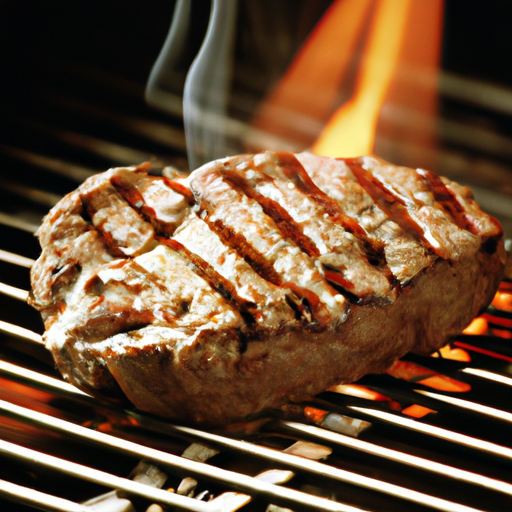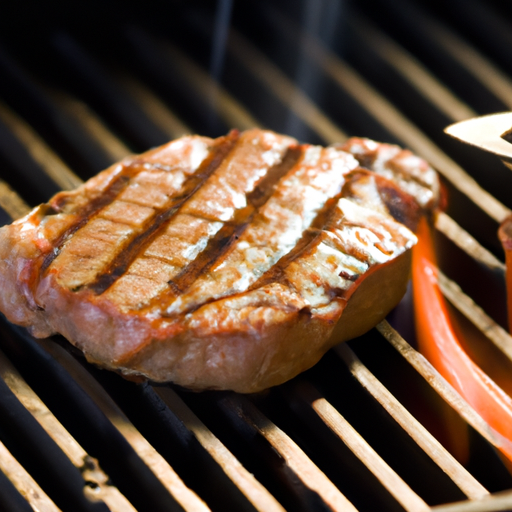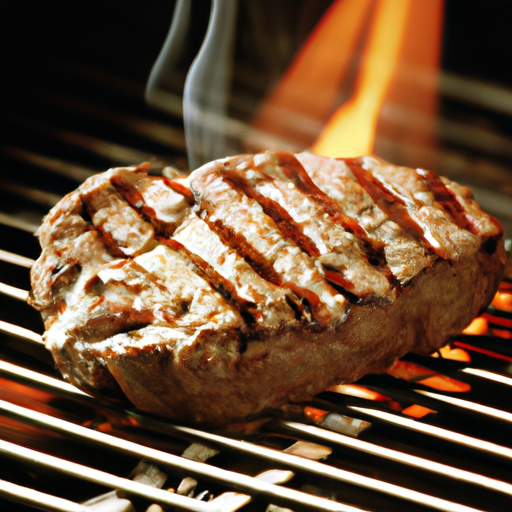Are you tired of overcooking or undercooking your meat? Look no further than “Meat Cooking Times and Temperatures,” the ultimate guide to achieving perfectly cooked meat every time. This comprehensive cooking chart provides you with the essential information on how long to cook different types of meat and at what temperatures, ensuring that your dishes are always cooked to perfection. Say goodbye to dry, tough steaks or undercooked chicken breasts – with this handy tool, you’ll become a master of meat cooking in no time!
Poultry
Chicken
When it comes to chicken, it’s important to cook it thoroughly to ensure it’s safe to eat. The recommended internal temperature for cooked chicken is 165°F (74°C), which ensures that any harmful bacteria present in the meat are killed.
For a juicy and tender chicken, you could opt for grilling it at medium heat. This will allow the chicken to cook evenly without losing too much moisture. Alternatively, you can also oven roast it at a temperature of around 375°F (190°C).
Turkey
Turkey is a popular choice for holiday meals, and cooking it properly is crucial to avoid any foodborne illnesses. Similar to chicken, the recommended internal temperature for fully cooked turkey is also 165°F (74°C).
To achieve a perfectly cooked turkey, you can use the classic method of roasting it in the oven at around 325°F (163°C). This allows the heat to penetrate the meat evenly, resulting in a moist and flavorful bird. Another option is to smoke the turkey at a slightly lower temperature of about 250°F (121°C) to infuse it with a smoky flavor.
Duck
Duck is known for its rich and flavorful meat, but it can be tricky to cook. To ensure the duck is safe to eat, it is recommended to cook it to an internal temperature of 165°F (74°C).
One popular cooking method for duck is pan frying. This allows the skin to become crispy while the meat remains moist and tender. Start by searing the duck breast skin side down in a hot pan, then finish cooking it in the oven at a lower temperature. Another great way to cook duck is by roasting it in the oven at around 400°F (204°C), which helps render the fat and achieve a crispy skin.
Goose
Goose is a prized bird for its rich, succulent meat. To ensure the goose is fully cooked and safe to eat, it is recommended to reach an internal temperature of 165°F (74°C).
One traditional method for cooking goose is roasting it in the oven at a fairly low temperature, around 325°F (163°C). This slow cooking process allows the fat to render and gives the meat a tender and moist texture. Another option is to grill or smoke the goose, which adds a unique smoky flavor to the meat.
Red Meat
Beef
Beef is a versatile meat that can be cooked to various levels of doneness, depending on personal preference. The recommended internal temperature for steak or roasts is 145°F (63°C) for medium rare, 160°F (71°C) for medium, and 170°F (77°C) for well done.
For a perfectly cooked steak, grilling is a popular method that allows the meat to develop a delicious sear and retain its natural flavors. Aim for high heat to achieve a medium rare or medium doneness. Another option for beef is oven roasting, which is great for larger cuts or roasts. An internal meat thermometer will help you monitor the doneness and ensure it reaches the desired temperature.
Lamb
Lamb is a tender and flavorful meat that is often enjoyed medium rare or medium. The recommended internal temperature for lamb is 145°F (63°C) for medium rare and 160°F (71°C) for medium.
Grilling lamb chops or racks is a popular method that allows the meat to develop a caramelized crust while keeping the interior tender and juicy. Another option is to oven roast the lamb, which is great for larger cuts or whole legs. Add some aromatic herbs and spices to enhance the flavor and create a truly delicious dish.
Pork
Pork is a versatile meat that can be enjoyed at various degrees of doneness, depending on the cut. The recommended internal temperature for pork is 145°F (63°C) for medium rare and 160°F (71°C) for medium.
Grilling pork chops or tenderloins is a great way to achieve a charred exterior and juicy interior. Pork roasts can also be cooked in the oven at around 325°F (163°C) until they reach the desired temperature. Remember to let the meat rest for a few minutes before carving to allow the juices to redistribute and enhance the flavor.
Venison
Venison, or deer meat, has a distinctive flavor and should be cooked carefully to showcase its unique taste. The recommended internal temperature for venison is 145°F (63°C) for medium rare and 160°F (71°C) for medium.
Grilling venison steaks or loin chops is a popular cooking method to enhance the natural flavors of the meat. Aim for medium rare for optimal tenderness. Additionally, venison roasts can be cooked in the oven at around 325°F (163°C) until the desired temperature is reached, making sure not to overcook and dry out the meat.

Seafood
Fish
Fish is a delicate protein that is best cooked to specific temperatures to ensure it retains its moisture and flavor. The recommended internal temperature for most fish fillets and steaks is 145°F (63°C).
Grilling fish is a popular method as it imparts a smoky flavor and gives the exterior a nice char. It’s important to oil the grill grates well to prevent the fish from sticking. Another option is to oven roast the fish at around 400°F (204°C) on a baking sheet lined with parchment paper for easy cleanup.
Shrimp
Shrimp is a versatile seafood that can be enjoyed in various dishes. It is recommended to cook shrimp to an internal temperature of 145°F (63°C) to ensure it is safe to eat.
Grilling shrimp is a quick and flavorful method that gives them a slight char and enhances their natural sweetness. Marinating the shrimp beforehand can add extra flavor. Another option is to pan fry the shrimp in a hot skillet with some butter or oil for a quick and tasty meal.
Scallops
Scallops are tender and delicate shellfish that should be cooked carefully to avoid overcooking. The recommended internal temperature for scallops is 145°F (63°C).
Pan searing scallops in a hot skillet with some butter or oil is a popular cooking method as it creates a caramelized crust while maintaining a soft and buttery interior. Be sure not to overcrowd the pan and give each scallop enough space to develop a nice sear.
Lobster
Lobster is considered a delicacy and is often associated with special occasions. To ensure the lobster meat is fully cooked, it should reach an internal temperature of 145°F (63°C).
One classic method for cooking lobster is boiling it in a large pot of salted water. The cooking time may vary depending on the size of the lobster, but it is generally recommended to cook them for around 10 minutes per pound. Another option is to grill or broil lobster tails, which imparts a smoky flavor to the meat and creates an impressive presentation.
Other Meats
Rabbit
Rabbit meat is lean and has a mild flavor that is similar to chicken. The recommended internal temperature for rabbit is 160°F (71°C).
One popular way to prepare rabbit is by braising it, which involves cooking it slowly in a flavorful liquid. This method helps keep the meat moist and tender. Another option is to roast or grill rabbit, treating it similarly to chicken with the appropriate cooking times and temperatures.
Game Birds
Game birds such as quail, pheasant, and grouse have a unique flavor and texture that can be enhanced through proper cooking techniques. The recommended internal temperature for game birds is 165°F (74°C).
Grilling or roasting game birds are excellent methods to cook them to perfection. It’s important to baste the birds with butter or oil occasionally during the cooking process to prevent them from drying out. Serve them with your favorite sides and enjoy the rich and savory flavors.

Grilling Temperatures
Rare
Rare is a cooking level desired by many meat lovers who enjoy a juicy and tender interior with a slightly pink center. For most meats, the internal temperature for rare is around 125°F (52°C). Keep in mind that it’s important to choose high-quality meats and ensure they come from a reputable source when cooking them rare.
Medium Rare
Medium rare is a popular cooking level that offers a balance between tenderness and a slight pink center. For most meats, the internal temperature for medium rare is around 135°F (57°C). This cooking level is often preferred for beef steaks and roasts.
Medium
Medium is a cooking level that provides meat with a more cooked and less pink center, while still retaining juiciness. For most meats, the internal temperature for medium is around 145°F (63°C). This level of doneness is suitable for those who prefer a slightly more cooked interior but still want a tender and flavorful result.
Medium Well
Medium well is a cooking level that brings the meat closer to well done while still retaining some pinkness. For most meats, the internal temperature for medium well is around 155°F (68°C). This cooking level is often recommended for individuals who prefer a less pink center but still want some juiciness.
Well Done
Well done is a cooking level favored by those who prefer thoroughly cooked meat without any pinkness. For most meats, the internal temperature for well done is around 160°F (71°C) and above. Keep in mind that cooking meat to well done may result in a drier texture, especially for lean cuts.
Oven Roasting Temperatures
Rare
For rare doneness when oven roasting, the internal temperature should reach around 125°F (52°C). This will result in a juicy and tender interior with a slight pink center.
Medium Rare
To achieve a medium rare doneness when oven roasting, aim for an internal temperature of around 135°F (57°C). This will provide a slightly more cooked center while still retaining the desired juiciness.
Medium
For medium doneness when oven roasting, the internal temperature should be around 145°F (63°C). This level of doneness is a good balance between tenderness and a more cooked center.
Medium Well
To cook meat to a medium well doneness when oven roasting, aim for an internal temperature of around 155°F (68°C). This will result in a more cooked center while still retaining some juiciness.
Well Done
For a well done doneness when oven roasting, the internal temperature should reach around 160°F (71°C) and above. Keep in mind that cooking meat to well done may result in a drier texture, especially for lean cuts.
Pan Frying Temperatures
Rare
To achieve a rare doneness when pan frying, aim for an internal temperature of around 125°F (52°C). This will result in a tender and juicy interior with a slight pink center.
Medium Rare
For a medium rare doneness when pan frying, the internal temperature should be around 135°F (57°C). This will provide a slightly more cooked center while retaining the desired juiciness.
Medium
To cook meat to a medium doneness when pan frying, aim for an internal temperature of around 145°F (63°C). This level of doneness offers a balance between tenderness and a more cooked center.
Medium Well
For a medium well doneness when pan frying, the internal temperature should reach around 155°F (68°C). This level of doneness provides a more cooked center while still retaining some juiciness.
Well Done
To achieve a well done doneness when pan frying, aim for an internal temperature of around 160°F (71°C) and above. Remember that cooking meat to well done may result in a drier texture, especially for lean cuts.
Sous Vide Temperatures
Poultry
When cooking poultry in a sous vide water bath, it is recommended to set the temperature at 165°F (74°C) for optimal food safety. This ensures that any harmful bacteria present in the meat are effectively eliminated.
Red Meat
For red meats such as beef, lamb, pork, and venison, the sous vide temperature will vary depending on the desired level of doneness. For medium rare, aim for an internal temperature of around 135°F (57°C). For medium, set the temperature to around 145°F (63°C), and for medium well, aim for an internal temperature of 155°F (68°C). Adjust the cooking time based on the thickness of the meat and desired level of tenderness.
Seafood
When cooking seafood, such as fish or shellfish, the sous vide temperature can vary depending on the specific type of seafood and personal preference. For fish fillets and steaks, aim for an internal temperature of around 145°F (63°C). For shrimp and scallops, set the temperature to around 145°F (63°C) as well. Adjust the cooking time based on the thickness of the seafood to achieve the desired texture.
Smoking Temperatures
Poultry
When smoking poultry such as chicken or turkey, it is important to cook it thoroughly to ensure it’s safe to eat. The recommended internal temperature for fully cooked poultry is 165°F (74°C). Set the smoker temperature to around 225°F (107°C) and adjust the cooking time based on the size of the bird.
Red Meat
When smoking red meats like beef or lamb, the recommended internal temperature will depend on the desired level of doneness. For medium rare, aim for an internal temperature of around 135°F (57°C). For medium, set the smoker temperature to around 145°F (63°C), and for medium well, aim for an internal temperature of 155°F (68°C). Adjust the smoking time based on the thickness of the meat and desired level of tenderness.
Fish
When smoking fish, it is important to cook it to an internal temperature of 145°F (63°C) to ensure it’s safe to eat. Set the smoker temperature to around 225°F (107°C) and adjust the smoking time based on the thickness of the fish.
Resting Times
Poultry
After cooking poultry, it’s important to allow it to rest before carving or serving. Resting allows the juices to redistribute within the meat, resulting in a more flavorful and moist final product. For poultry, a resting time of around 10 to 15 minutes is recommended.
Red Meat
Resting red meat after cooking is crucial to allow the juices to redistribute throughout the meat. This results in a more tender and flavorful end result. For red meats such as beef, lamb, pork, and venison, a resting time of around 10 to 15 minutes is generally recommended.
Seafood
While seafood typically doesn’t require as long of a resting time as other meats, allowing it to rest for a few minutes can still improve the overall texture and flavor. A resting time of around 5 minutes is usually sufficient for seafood dishes.
In conclusion, cooking meat to the correct temperature is essential for both food safety and ensuring the best possible taste and texture. Whether grilling, roasting, pan frying, using sous vide, smoking, or cooking in the oven, understanding the recommended temperatures for different types of meat is crucial. By following these guidelines and allowing the meat to rest properly, you can create delicious and safe dishes that will please even the most discerning palate. Happy cooking!
